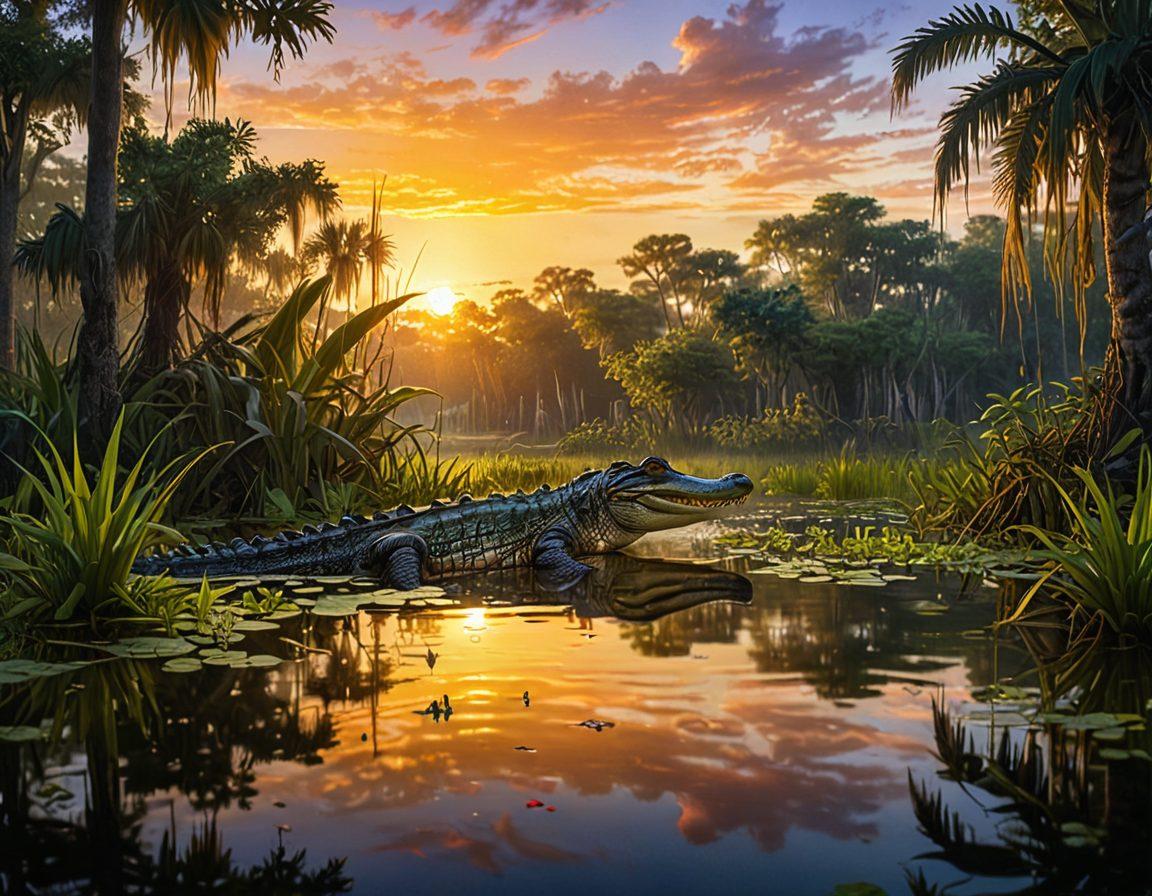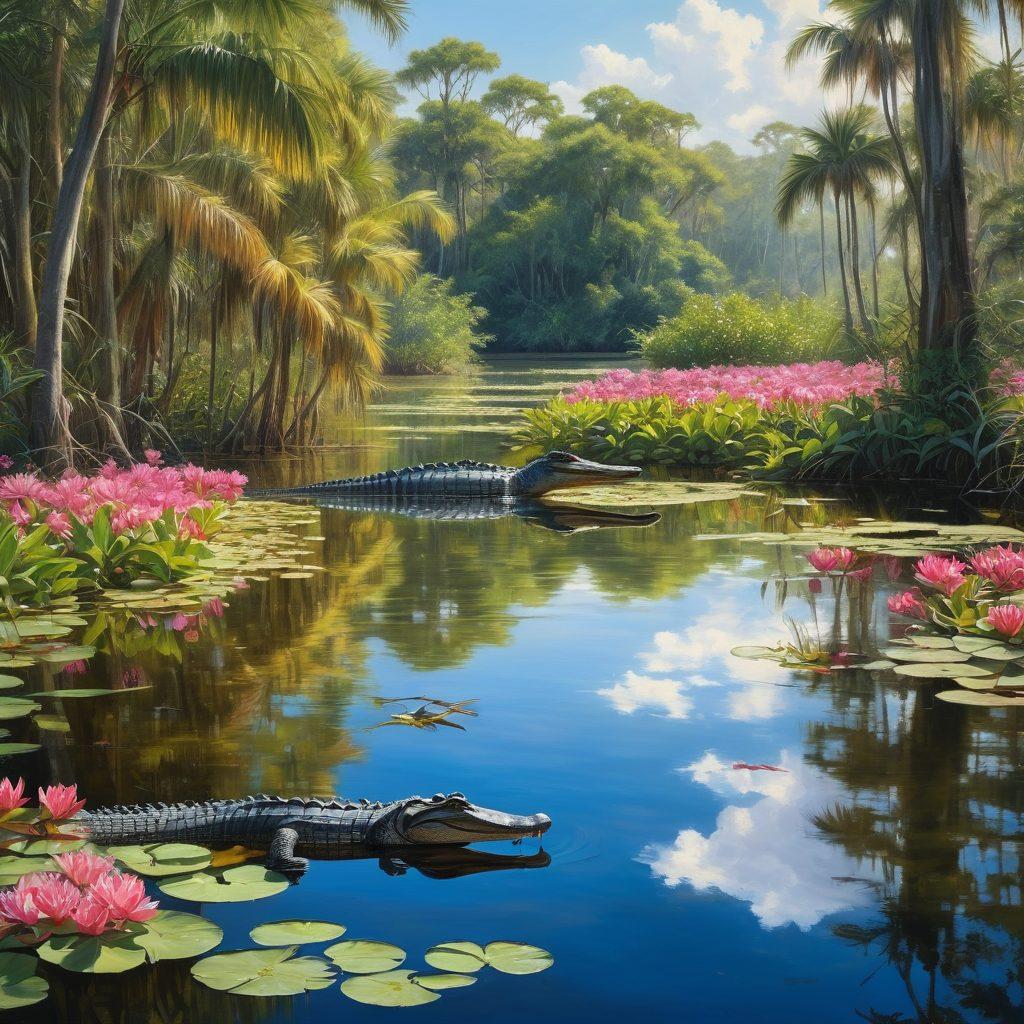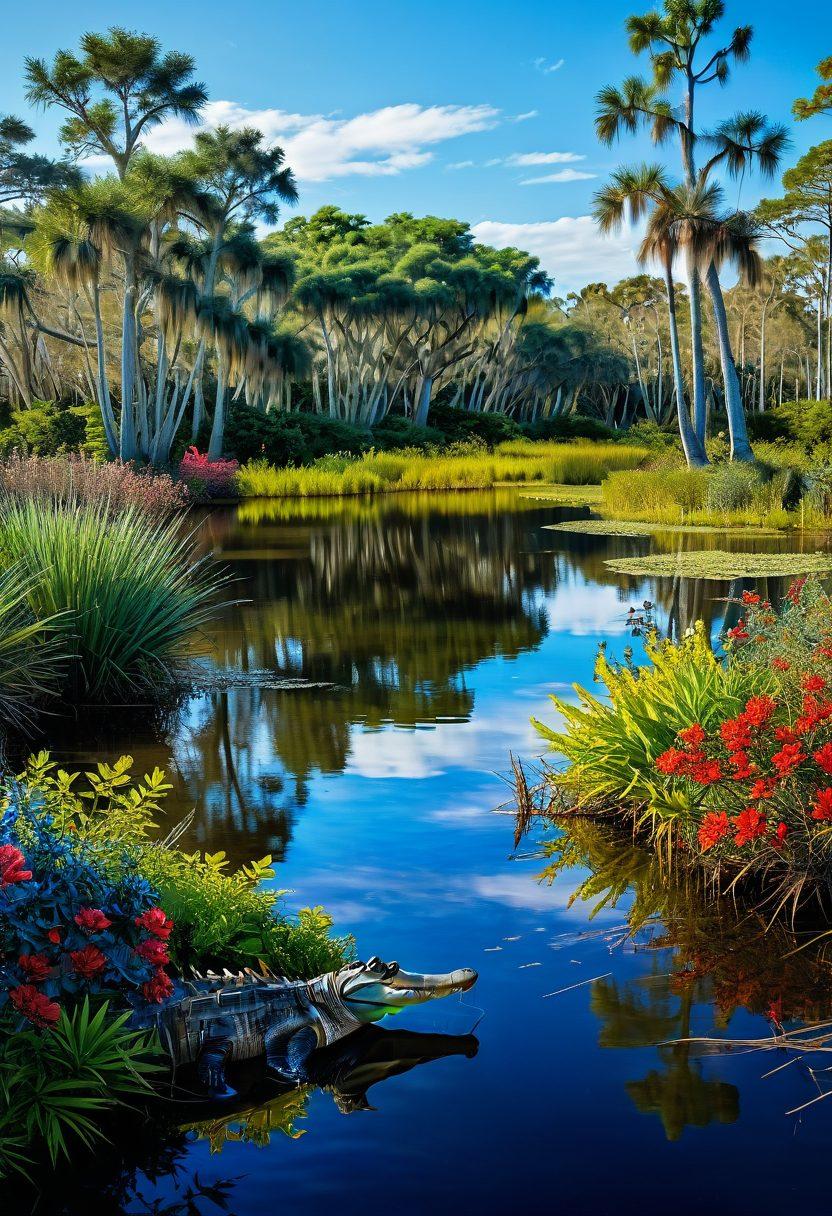Exploring Florida's Wild Side: A Deep Dive into Alligators and Their Ecosystems
Welcome to the untamed heart of Florida, a place where the sun-kissed swamps and tranquil waters teem with life. When one thinks of Florida wildlife, the majestic alligator often comes to mind. These ancient reptiles are not just iconic symbols of the state but vital players in the intricate dance of Florida's ecosystems. As we venture deeper, we’ll unveil the secrets of Florida's alligator-packed habitats—a journey that promises to excite your curiosity and deepen your appreciation for this unique wildlife.
Imagine standing on a wooden boardwalk surrounded by the lush greenery of a Florida wetland, the air thick with humidity, and the sound of rustling leaves stirring your senses. Suddenly, a ripple breaks the surface of the water, and there it is—a Florida alligator, sleek and enigmatic. This encounter isn't just a moment of wildlife photography; it’s a reminder of the delicate balance of Florida nature. But what role do these formidable creatures play in maintaining the harmony of Florida ecosystems? They are the apex predators, controlling the population of other species and ensuring the health of their habitat.
As we delve into alligator behavior, it's fascinating to note that they are more than just fearsome hunters. They are complex creatures with a rich social structure and effective forms of communication. Did you know that alligators can actually ‘talk’ to each other through a series of bellows, grunts, and hisses? This intriguing display of social interaction gives us insights into animal behavior that many Florida nature enthusiasts may overlook. Their interactions are vital not just for their survival, but also for the overall management of the ecosystems in which they reside.
Our journey also brings us to the conservation efforts surrounding alligators in Florida. As wildlife conservation becomes increasingly vital in this era of climate change, the protection of alligator habitats ensures the sustainability of Florida's rich fauna. Engaging in outdoor activities such as guided swamp tours allows not only a firsthand experience of these reptiles but also a deeper understanding of their role in Florida's biodiversity. Have you ever participated in a tour that highlights the critical importance of sustainable wildlife practices? It’s an eye-opening experience that fosters a connection between humans and the natural world.
In conclusion, exploring Florida's alligator-packed habitats is more than just an adventure into the wild. It’s an opportunity to embrace the enchanting world of reptiles and amphibians that govern these ecosystems. By sharing stories through nature blogs and engaging in responsible wildlife photography, we contribute to a culture of appreciation and conservation. So, the next time you venture into Florida's outdoors, pause for a moment. Listen carefully, observe intently, and remember that every sound, every ripple holds the secrets of a delicate natural history waiting to be discovered.
The Role of Alligators in Florida's Diverse Ecosystems
When we think of Florida, images of sun-soaked beaches, vibrant sunsets, and adventurous outdoor activities usually come to mind. But lurking just beneath the surface of this paradise is a fascinating, formidable creature— the alligator. The role of alligators in Florida's diverse ecosystems is pivotal, weaving together the rich tapestry of Florida wildlife. Why should we care about these ancient reptiles? Because understanding their ecological significance can deepen our appreciation for Florida nature and motivate us towards wildlife conservation efforts.
Imagine gliding through the serene waters of the Everglades, the heart of Florida’s dynamic ecosystems. It's a place where alligators bask in the sun, blending into the marshy landscape. As apex predators, Florida alligators help maintain the balance of their habitats, keeping populations of other species in check. Their presence promotes diversity, proving that even the fiercest of creatures plays a crucial role in the overall health of Florida ecosystems. Have you ever wondered what happens when these key players are removed from the equation?
One of the intriguing aspects of alligators in Florida is how they shape their environment. Large alligators create 'alligator holes'—deep ponds that provide essential water sources for other wildlife during dry spells. It's a reminder of the interconnectedness of Florida habitats; when alligators thrive, so do countless other species, from fish to birds. Through this lens, Florida becomes not just a destination for outdoor activities but a living classroom highlighting the principles of ecosystem management and natural history.
The behaviors of alligators are equally captivating. Did you know that they often engage in vocalizations, especially during mating season? The growls and bellows echo through the swamps, a reminder that these reptiles are not merely lurking shadows but active participants in their ecosystems. The study of such animal behavior opens a window into the world of Florida herpetology, an exciting branch of biology that can inspire wildlife photography enthusiasts and nature blog writers alike. Imagine capturing the remarkable moments when an alligator launches from the water to catch its prey, a stunning image that tells a story of survival and adaptation.
As we continue our exploration of Florida's wild side, let us remember the importance of sustainable wildlife practices. Protecting alligators and their habitats is critical not only for their survival but also for the health of Florida's ecosystems. By supporting wildlife conservation efforts, engaging in responsible outdoor activities, and promoting education on Florida fauna, we can ensure that future generations will get to experience the awe of these magnificent creatures. So, whether you’re a seasoned Florida outdoor adventurer or a curious newbie, remember that every encounter with an alligator is an invitation to witness nature’s intricate web of life.
Adventures in Nature: Observing Florida's Reptilian Giants in Their Natural Environment
Adventures in nature beckon as we step into the vibrant landscapes of Florida, a paradise teeming with diverse wildlife and breathtaking ecosystems. Chief among these inhabitants are the majestic Florida alligators, often viewed as the reigning monarchs of the swamp. Imagine gliding silently through the sun-kissed waters of the Everglades, with the anticipation of encountering these ancient reptiles. But what does it truly take to observe alligators in Florida, and why are these creatures so integral to our understanding of Florida's nature? Join me on this wild journey to explore not just the alligators but the rich tapestry of Florida wildlife and their habitats.
The experience of observing Florida alligators in their natural environment is something that stays with you long after the trip is over. Whether it's a burgeoning interest in Florida herpetology or a thrill-seeking adventure in the Florida outdoors, you can't help but feel a rush of adrenaline as you spot an alligator lounging on the bank. The iconic quote by naturalist John Muir rings true: "In every walk with nature one receives far more than he seeks." Each outing brings the chance to discover more about these reptiles and amphibians that dominate Florida's waters.
As we navigate through the swamps and marshes, we become active participants in the Florida ecosystems. The first thing to note is that these enormous reptiles play an essential role in managing their environment. Ever heard of the term 'keystone species'? Alligators create and maintain water holes that serve as habitat for countless other creatures, making them indispensable to ecosystem management. This isn't just a wildlife blog, but a deeper understanding of how every creature, including the Florida fauna we often overlook, contributes to the larger picture of sustainability and wildlife conservation.
Observing alligators can ignite a passion for wildlife photography that captures the splendor of these creatures in action. Imagine taking shots of an alligator as it stealthily moves through the water, or the mesmerizing stillness of one resting in the sun. The beauty of Florida nature is unparalleled, and each snap serves as an opportunity to share stories about animal behavior and their natural history with our friends and social media followers. So grab your camera, and don't forget to frame your photos around the natural environment to showcase the delicate balance of Florida's habitats.
Ultimately, immersing ourselves in Florida's wild side is more than just a grand adventure; it is a commitment to understanding and preserving these environments for future generations. As we engage in outdoor activities like kayaking or guided eco-tours, we cultivate appreciation and respect for the intricate relationships between the reptiles and amphibians that thrive in these ecosystems. Let's spark conversations about sustainable wildlife practices and inspire others to explore the beauty and complexity of Florida’s rich biodiversity. Ready to embark on your adventure and witness the Florida alligators in their element? The wild awaits!


